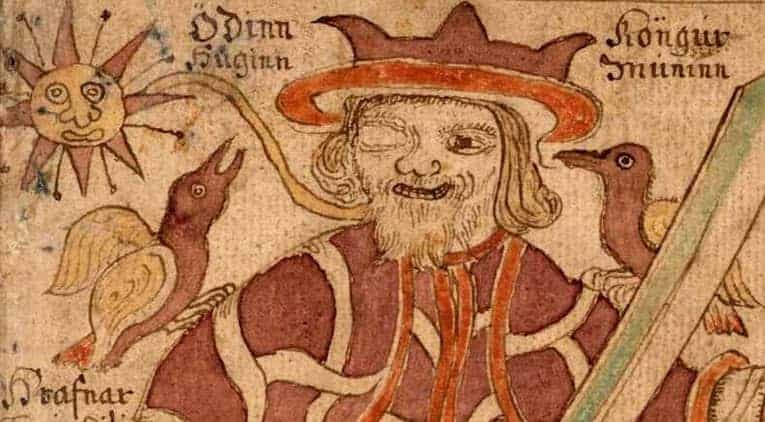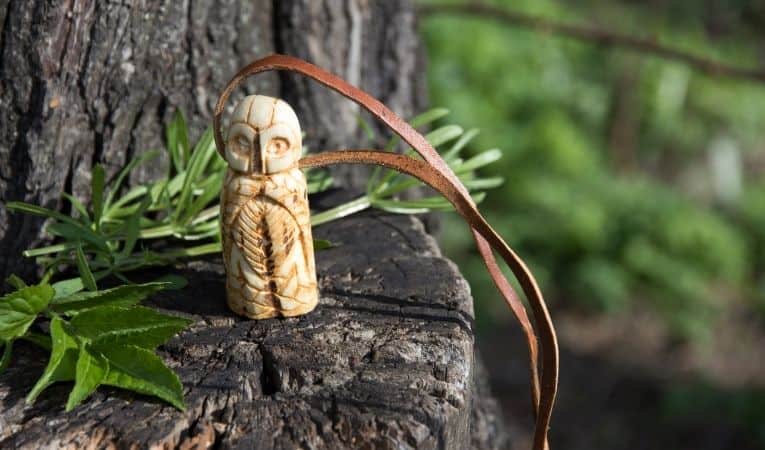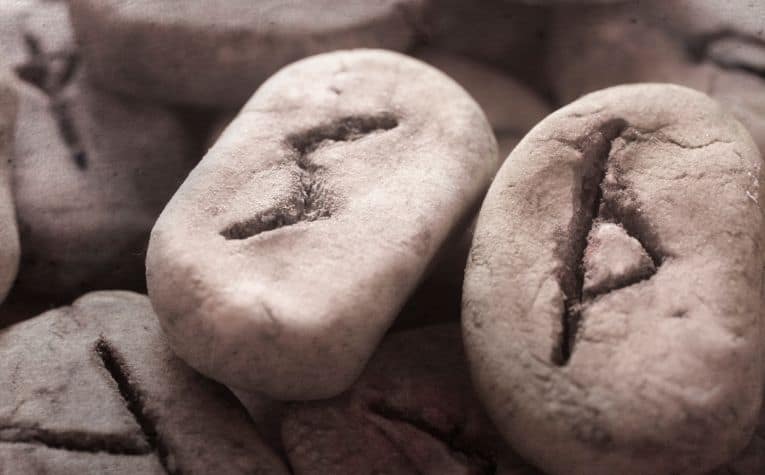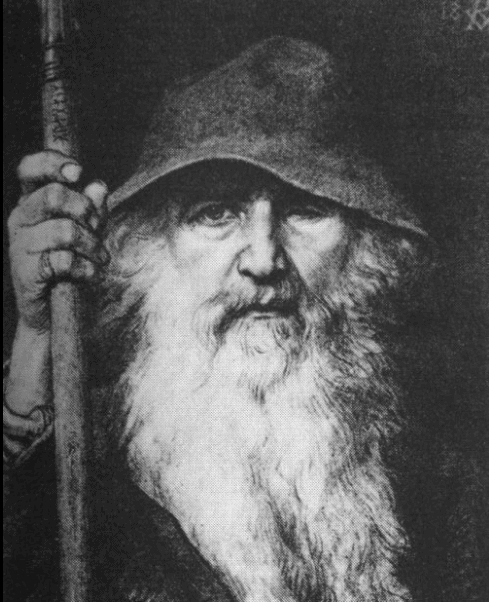Norse mythology is a fascinating collection of riveting tales and extraordinary characters.
As a society that for centuries worshipped pagan gods, the Vikings revered beloved figures like Thor, the god of thunder, Freyja, the goddess of love and fertility, and a host of other Aesirs and Vanirs like Heimdall, Baldr, Frigg, Njord, and Freyr.
The god whose significance in Norse mythology outweighed that of all others was Odin. Because his providence was sought across so many facets of Viking life, Odin was known by many names.
To some, he was the god of the dead, while to others, he was the god of war, wisdom, poetry, and much more.
Norse gods like Thor were more popular among the masses than Odin, and they were more straightforward as far as the role they filled.
For example, Thor was primarily the guardian and protector of Asgard and Midgard (and he also dabbled in blessing unions like marriages).
Odin, on the other hand, was looked to by kings and chieftains, not only for blessings but also for enlightenment. Keep reading to learn more.
Odin is the chief god in Norse Mythology and Zeus is the chief god of Greek Mythology. How do they compare? See Would Odin Beat Zeus in a Fight? to learn more.

Why does Odin go by so many Names?
Viking society relied upon oral traditions to pass down their stories from one generation to the next.
Of the few written accounts that exist, most were written after the Viking Age had ended, with the most prominent bodies of work coming not from Scandinavia but from Iceland.
The Poetic Edda and Prose Edda, both written by the Icelandic chieftain and poet Snorri Sturluson, is often looked to by scholars and enthusiasts alike for insight into the world of the Vikings and the gods they worshiped. (Also see Does Odin Live in Valhalla?)
Within these two works alone, there are well over 125 instances of different names and titles referring to Odin. Included among these are:
- Alföðr – “father of all”
- Bragi – “chieftain”
- Fjölnir – “much wise,” “concealer”
- Geirvaldr – “spear-master”
- Höarr – “one-eyed”
- Síðhöttr – “drooping hat”
- Valkjósandi – “chooser of the slain”
Many of the references serve more as descriptors for Odin, in specific instances or within particular circumstances (e.g., the one with the grey beard, the spear-thrower) than formal given names.
Their sheer volume does indicate the huge presence of Odin within Norse mythology and the incredible assortment of roles he played in the myths and folklore of the Viking people. [1]
Interested in Odin? Make sure to read Why Did Odin Stop at 9 Realms? to learn more.

The Many Names of Odin
When examining Odin’s complexities and appreciating his all-encompassing position in Norse mythology, it helps to move beyond the literal names.
It’s critical to appreciate the many roles he filled in the eyes of Viking society and those who worshiped him, from humble slaves to middle-class warriors to powerful kings.
Odin the All-Father
If there is one name by which Odin is known universally, it is the great all-father of the Viking universe. By virtue of this lofty title, Odin is perceived as:
- The architect of the cosmos
- Creator of humankind
- Leader of the Aesir and Vanir gods (many of whom he actually fathered in a biological sense)
Starting from the beginning, Odin plays a central role in the Viking creation narrative, having slain the original frost giant Ymir with his brothers Ve and Vili.
From various parts of the giant’s corpse, the threesome shaped and formed the earth, the sky, bodies of water, forests, and Midgard, the realm of humankind.
Once the world was created, Odin transformed logs into the first human beings.
Odin had multiple spouses and with each bore offspring who were gods themselves. These included:
- Balder – the god of light, goodness, happiness, and beauty
- Hod – the god of darkness
- Thor – the god of thunder and the most popular of all Norse deities
Bestowed with the gift of prophecy, Odin was the all-father in a temporal sense as well.
He knew that he, along with nearly all the Aesir and Vanir gods, would meet their end during Ragnarok, the cataclysmic end of days in Norse mythology. [2] [3]
Odin is often depicted with just one seeing eye. Why is this? See This is Why Odin Sacrificed His Eye to learn more.

Odin the God of War
Where the mighty god of thunder, Thor, was the Norse deity that Viking society looked to for protection in a broad and general sense, it was to Odin, the god of war, that chieftains and warriors prayed for victory on the battlefield.
According to legend, Odin would customarily hurl his enchanted spear Gungnir over the opposing soldiers’ heads to plant fear in their hearts and doubt in their minds.
The Vikings adopted this practice and would symbolically hurl a single spear over their enemy’s ranks as a gesture to Odin, with the belief that he would watch over them.
The Vikings also believed that Odin had the power to predetermine who would fall with honor on the field of battle and who would live to fight another day.
Odin’s role as the god of war was not limited to the mortal realm.
The reason why he and his Valkyries hand-selected fallen warriors to join them in the halls of Valhalla was to bolster his ranks of Einherjar, warriors in the afterlife that would fight one final battle of epic proportions during Ragnarok. [4] [5]
The Vikings revered Odin. See Why Did the Vikings Worship Odin? to learn more.
Odin the God of the Dead
Just as he watched over Vikings at war, Odin reigned over their dead, but only those who died honorable deaths in battle.
While he made his home in Asgard, the realm of the Aesir gods, Odin’s preparations for Ragnarok made him a regular presence in Valhalla.
This is where he presided over fallen Viking warriors who trained and honed their fighting skills by day and feasted and drank wine by night.
As the Norse god of the dead, Odin’s powers were not limited to training warriors in the afterlife.
Odin was also versed in the art of communicating with the dead and even had the ability to raise the dead to glean from them the knowledge that they had taken to the grave. [6]
Odin the God of Wisdom
If there is one attribute, godly and human, with which Odin is most closely associated, it is perhaps wisdom.
Odin’s insatiable thirst for knowledge and enlightenment is well documented in Norse poems and sagas.
Tales of the sacrifices he made in pursuit of these qualities are among the most well-known and often recited of Viking myths.
According to one popular myth, there lived a being named Mimir whose wisdom and intelligence were without peer.
When Odin learned that the source of Mimir’s intellectual powers was drawn from the waters of a magical well, he sought to partake in the enchanted liquid.

When Mimir informed him that the cost of a sip would be one of his eyes, Odin plucked one out of its socket and threw it into the well as instructed.
The sip of water from Mimir’s well infused Odin not with knowledge in a scholarly sense, but deep enlightenment and profound wisdom.
Even this did not satisfy the god of wisdom, who sought to unlock the secret meanings of Old Norse runes.
To do so, he hung himself from Yggdrasil (the tree of life) for nine days and nights and even impaled himself with his spear as a demonstration of his self-sacrifice.
Even Odin’s loyal companions, a pair of ravens named Huginn (“thought” in Old Norse) and Muninn (“memory”), went out each morning to fly around the nine realms of the Viking universe.
To keep him fully apprised of the world’s happenings, they reported all of their observations to Odin upon their return. [7]
Interested in Norse Mythology? See 14 Great Books on Norse Mythology that explain the gods, heroes, and villains of these ancient stories of Scandinavia.
Odin the God of Poetry
No god in Norse mythology (or perhaps any culture’s mythology) held intellectual power in such high regard as Odin.
The sacrifices he made for wisdom and to decipher Old Norse runes are well documented. For the gift of speaking and writing in poetic verse, Odin resorted to cunning and trickery.
Odin learned of a magical ale brewed from the blood of Kvasir, a wise being who had roamed the world, sharing his unmatched wisdom.
Known as the Mead of Poetry, the magical elixir came into the possession of a giant named Suttung.
Using his shape-shifting power, Odin transformed himself into a snake to bore his way into the giant’s den deep within a mountain.
He then seduced the giant’s daughter over a period of three nights, during which time he quaffed down the Mead of Poetry, eventually making his daring getaway in the form of an eagle.
Once safely in the air, Odin regurgitated the mead into awaiting vessels so that it could be shared with humankind. [8]
Final Thoughts
Though he is often depicted wearing a shaggy wizard hat, as the Viking god-in-chief, Odin wore many hats, reflecting his incomparable stature in Norse mythology.
References:
[1] Source
[2] Source
[3] Source
[4] Source
[5] Source
[6] Source
[7] Source
[8] Source
Also, see Is Odinsleep Found in Norse Mythology? to learn more.
